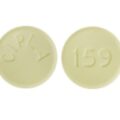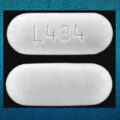What is Diabetmin?
Diabetmin is a brand of metformin and a prescription medication produced by Hovid for the management of diabetes. Metformin the active ingredient in Diabetmin belongs to a class of drugs called biguanides. A class of drugs is a group of medications that work in a similar way. These drugs are often used to treat similar conditions.
Diabetmin works by:
- reducing the amount of glucose (sugar) made by your liver
- decreasing the amount of glucose your body absorbs
- increasing the effect of insulin on your body.
Insulin is a hormone that helps your body remove extra sugar from your blood. This lowers your blood sugar levels. Diabetmin is used alone or with other medications, including insulin, to treat type 2 diabetes (condition in which the body does not use insulin normally and, therefore, cannot control the amount of sugar in the blood). Diabetmin also increases your body’s response to insulin, a natural substance that controls the amount of glucose in the blood. Diabetmin is not used to treat type 1 diabetes (condition in which the body does not produce insulin and therefore cannot control the amount of sugar in the blood).
How to take Diabetmin
The Diabetmin dosage your doctor prescribes will depend on several factors. These include:
- the type and severity of the condition you’re using Diabetmin to treat
- your age
- the form of Diabetmin you take
- other medical conditions you may have
To help you remember to take Diabetmin, take it around the same time(s) every day. Follow the directions on your prescription label carefully, and ask your doctor or pharmacist to explain any part you do not understand. Take Diabetmin exactly as directed. Do not take more or less of it or take it more often than prescribed by your doctor.
Your doctor may start you on a low dose of Diabetmin and gradually increase your dose not more often than once every 1–2 weeks. You will need to monitor your blood sugar carefully so your doctor will be able to tell how well Diabetmin is working.
Diabetmin controls diabetes but does not cure it. Continue to take Diabetmin even if you feel well. Do not stop taking Diabetmin without talking to your doctor. Ask your pharmacist or doctor for a copy of the manufacturer’s information for the patient.
What are the side effects of Diabetmin?
Diabetmin oral tablet can cause mild or serious side effects. The following list contains some of the key side effects that may occur while taking Diabetmin. This list does not include all possible side effects.
For more information on the possible side effects of Diabetmin or tips on how to deal with a troubling side effect, talk with your doctor or pharmacist.
More common side effects
The more common side effects that can occur with Diabetmin include:
- stomach problems:
o diarrhea
o nausea
o stomach pain
o heartburn
o gas
If these effects are mild, they may go away within a few days or a couple of weeks. If they’re more severe or don’t go away, talk to your doctor or pharmacist.
Serious side effects
Call your doctor right away if you have serious side effects. Call 911 if your symptoms feel life-threatening or if you think you’re having a medical emergency. Serious side effects and their symptoms can include the following:
- Lactic acidosis. Symptoms can include:
o tiredness
o weakness
o unusual muscle pain
o trouble breathing
o unusual sleepiness
o stomach pains, nausea, or vomiting
o dizziness or lightheadedness
o slow or irregular heart rate
- Hypoglycemia (low blood sugar). Symptoms can include:
o headache
o weakness
o confusion
o shaking or feeling jittery
o drowsiness
o dizziness
o irritability
o sweating
o hunger
o fast heart rate
Diabetmin warnings
Lactic acidosis
- This drug has a black box warning. This is the most serious warning from the Food and Drug Administration (FDA). A black box warning alerts doctors and patients about drug effects that may be dangerous.
- Lactic acidosis is a rare but serious side effect of this drug. With this condition, lactic acid builds up in your blood. This is a medical emergency that requires treatment in the hospital. Lactic acidosis is fatal in about half of people who develop it. You should stop taking this drug and call your doctor right away or go to the emergency room if you have symptoms of lactic acidosis.
- Symptoms include weakness, unusual muscle pain, trouble breathing, unusual sleepiness, and stomach pains. They also include nausea or vomiting, dizziness or lightheadedness, and slow or irregular heart rate.
Alcohol use warning
You shouldn’t drink alcohol while taking this drug. Alcohol can increase your risk of lactic acidosis from Diabetmin. Alcohol may also raise or lower your blood sugar levels.
Kidney problems warning
If you have moderate to severe kidney problems, you have a higher risk of lactic acidosis. You shouldn’t take this drug.
Liver problems warning
Liver disease is a risk factor for lactic acidosis. You shouldn’t take this drug if you have liver problems.
Allergy warning
This drug can cause a severe allergic reaction. Symptoms include:
- trouble breathing
- swelling of your throat or tongue
- hives
Call emergency lines or go to the nearest emergency room if you develop these symptoms.
Don’t take this drug again if you’ve ever had an allergic reaction to it before. Taking it again could be fatal (cause death).
Warnings for people with certain health conditions
For people with kidney problems: If you have moderate to severe kidney problems, you have a higher risk of lactic acidosis. You shouldn’t take this drug.
For people with liver problems: Liver disease is a risk factor for lactic acidosis. You shouldn’t take this drug if you have liver problems.
For people who plan to have an imaging procedure: You’ll need to stop taking this drug for a short time if you plan to have an injection of dye or contrast for an imaging procedure. This can affect how your kidneys work and put you at risk of lactic acidosis.
For people with illnesses or plans to have surgery: Tell your doctor if you have a fever or infection, are injured, or plan to have surgery or another medical procedure. They may need to change your dosage of this drug.
For people with diabetic ketoacidosis: You shouldn’t use this drug to treat diabetic ketoacidosis.
For people with heart problems: If you have a condition in which oxygen to your heart is decreased, such as recent heart attack or heart failure, your risk of lactic acidosis is higher. You shouldn’t take this drug.
Warnings for certain groups
For pregnant women: There haven’t been enough studies done in pregnant humans to be certain how this drug might affect the fetus. Research in animals has not shown negative effects to the fetus when the mother takes the drug. However, animal studies don’t always predict the way humans would respond.
Talk to your doctor if you’re pregnant or planning to become pregnant. This drug should only be used in pregnancy if clearly needed.
It’s important for women with type 2 diabetes to treat their condition even during pregnancy. Pregnant women typically take insulin to control their blood sugar level, rather than Diabetmin.
For women who are breastfeeding: This drug may pass into breast milk and may cause side effects in a child who is breastfed. Talk to your doctor if you breastfeed your baby. You may need to decide whether to stop breastfeeding or stop taking this medication.
For seniors: People 80 years of age and older shouldn’t start taking Diabetmin unless they have normal kidney function. People at these ages have a higher risk of lactic acidosis. If you’re 80 years or older and taking Diabetmin, you shouldn’t take the maximum dosage.
For children: The immediate-release form of this drug has not been established as safe and effective for use in children younger than 10 years.





